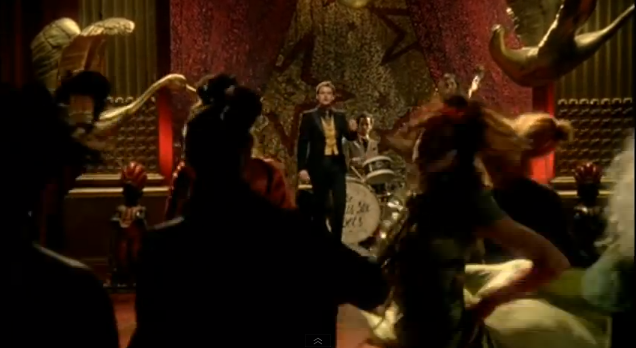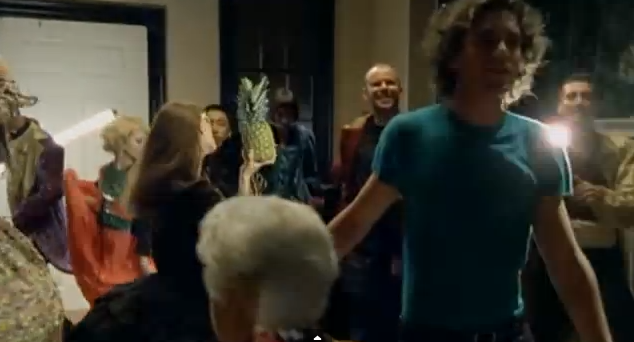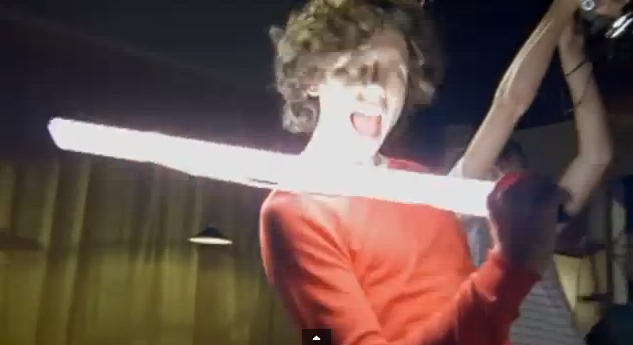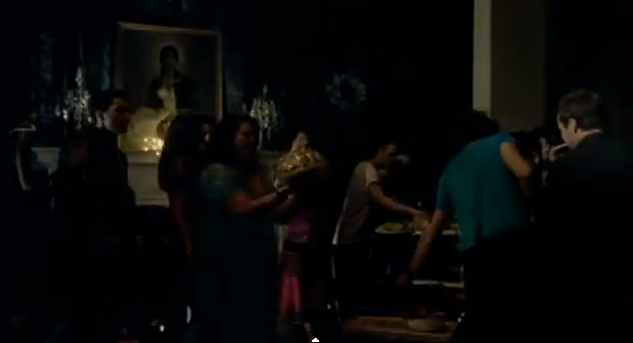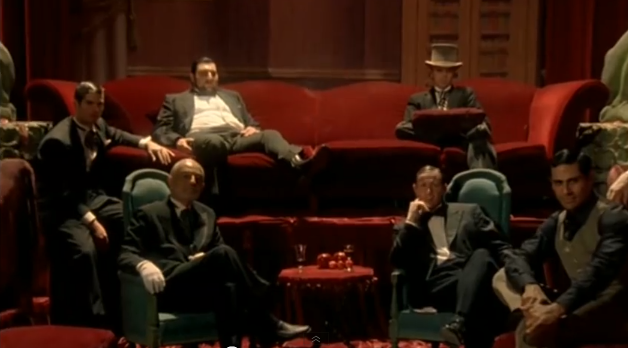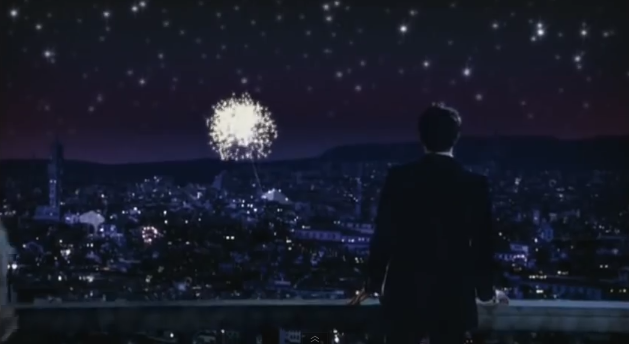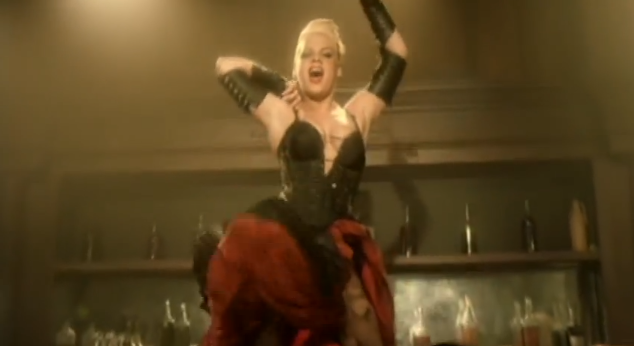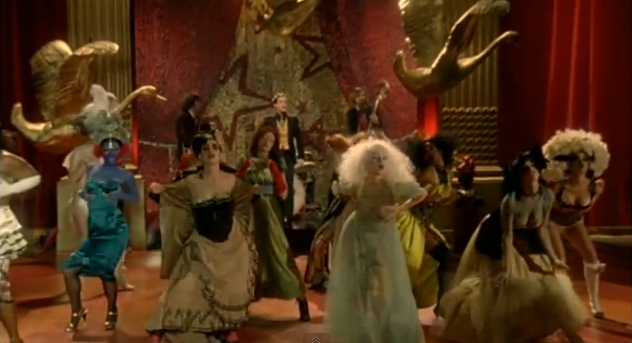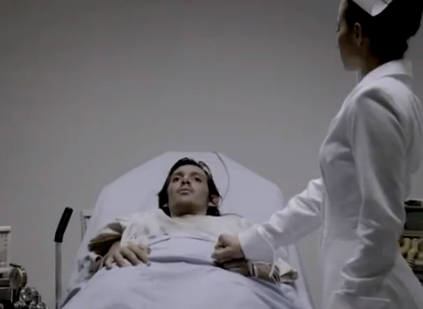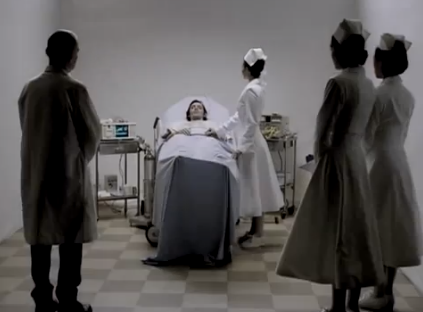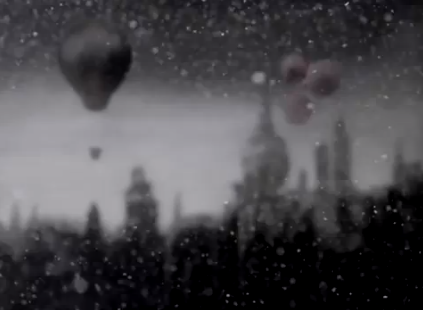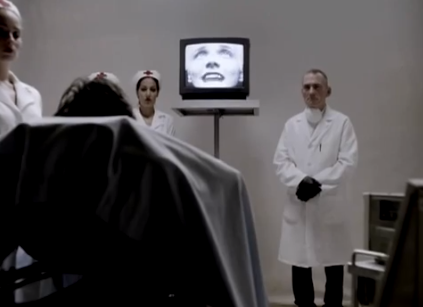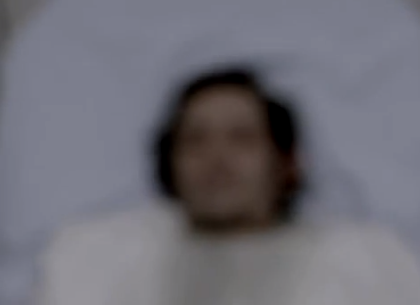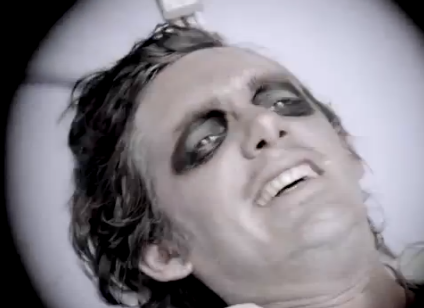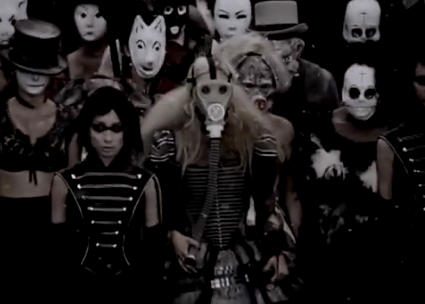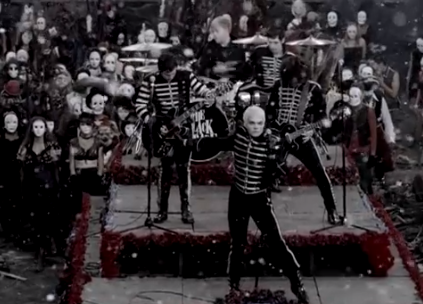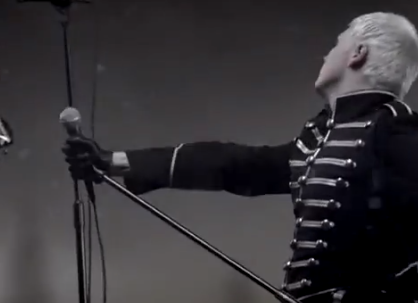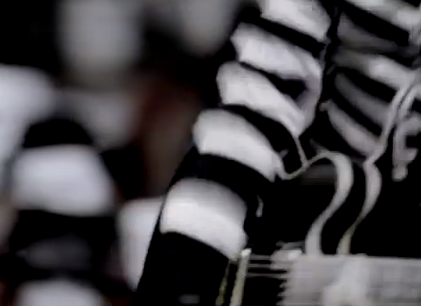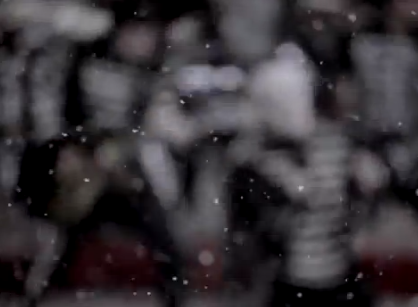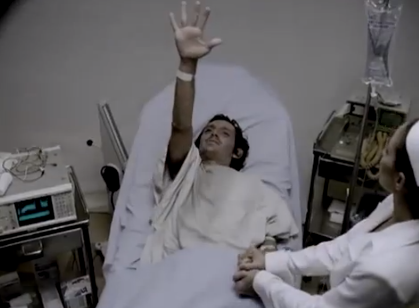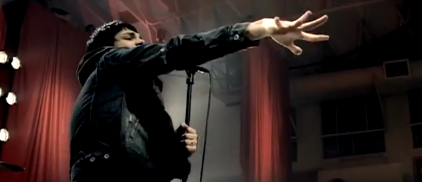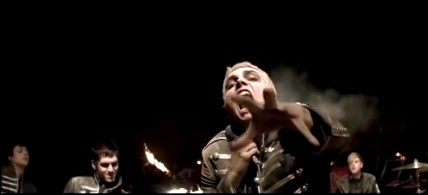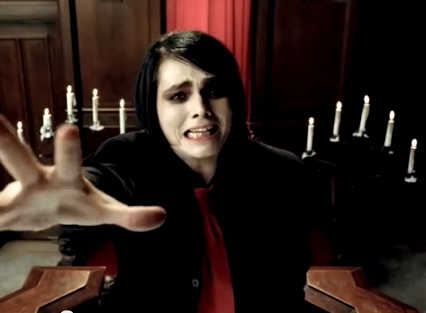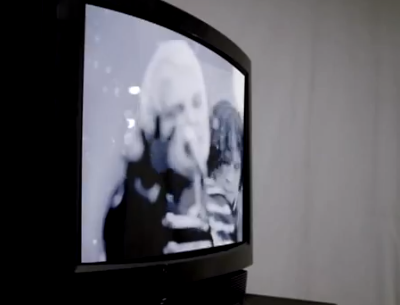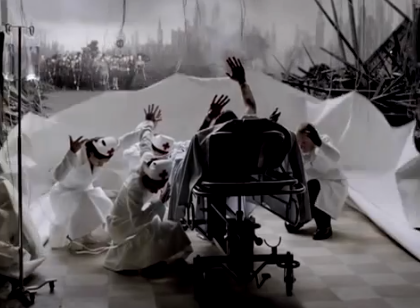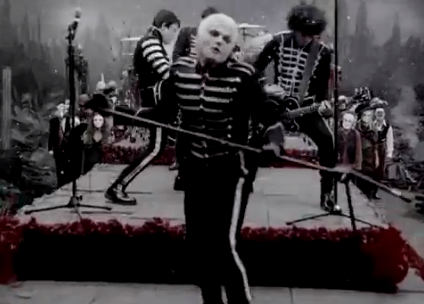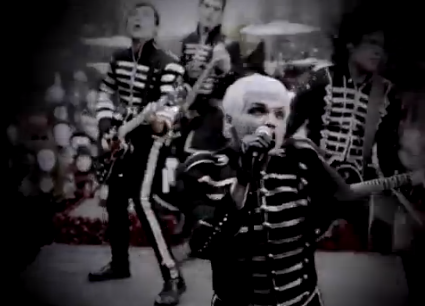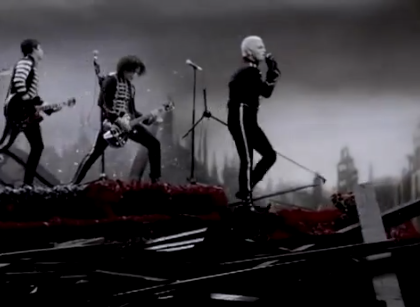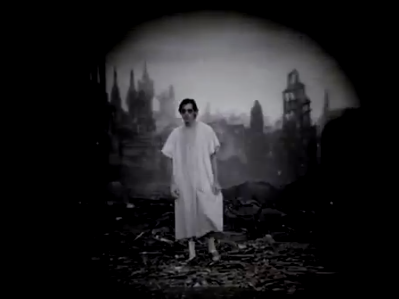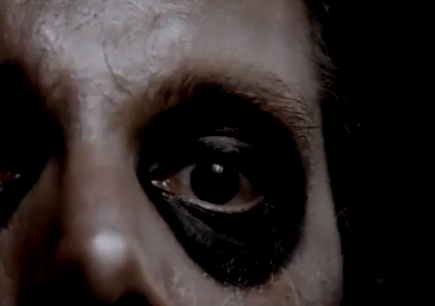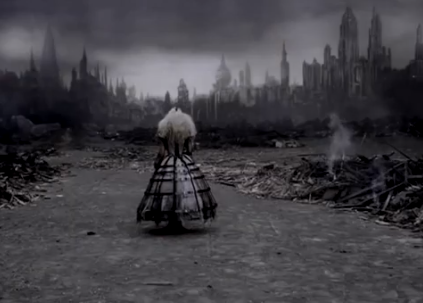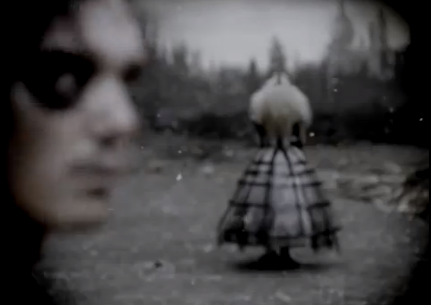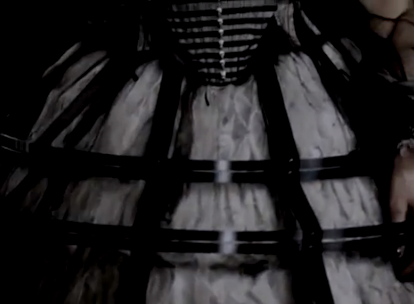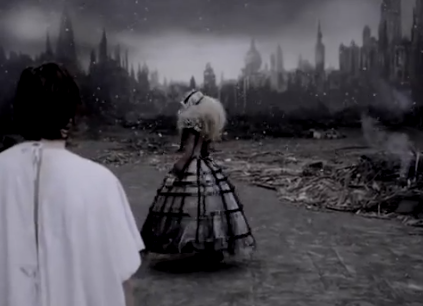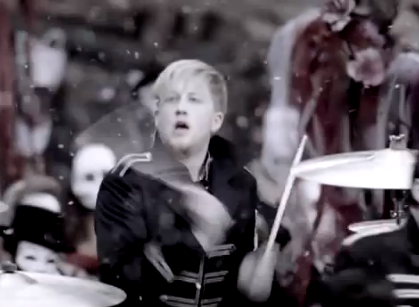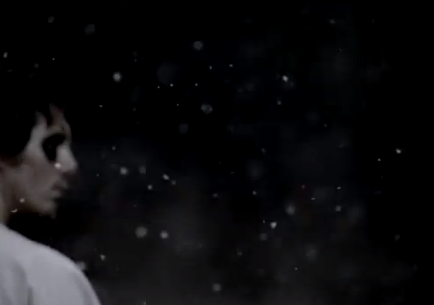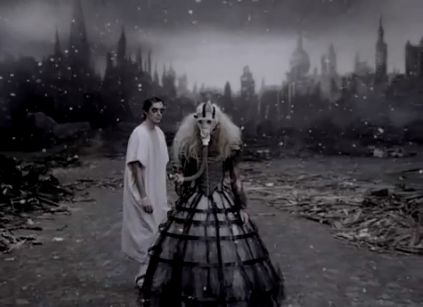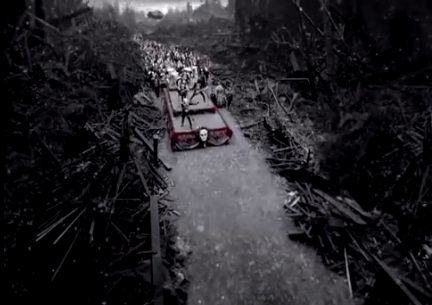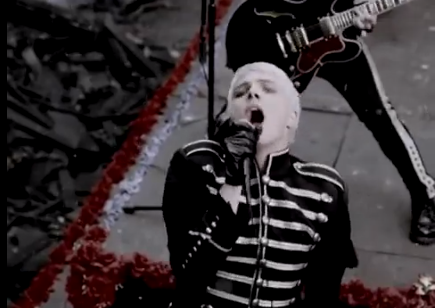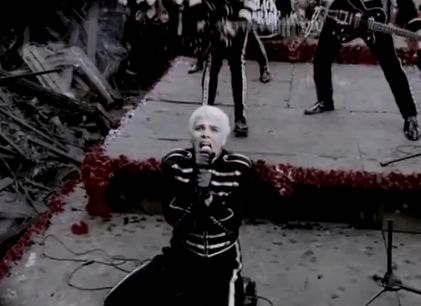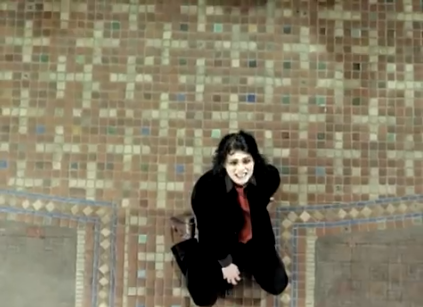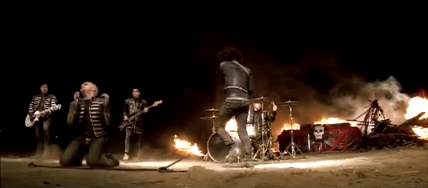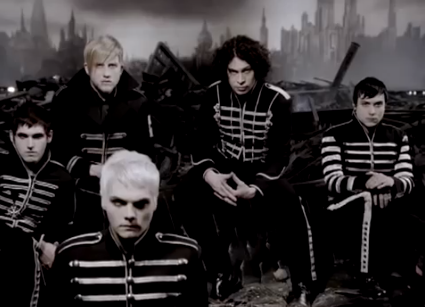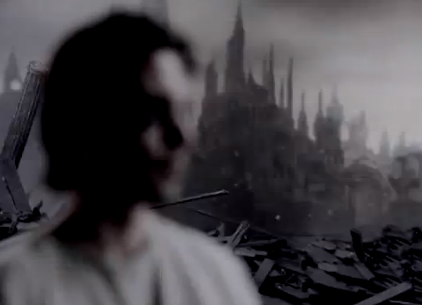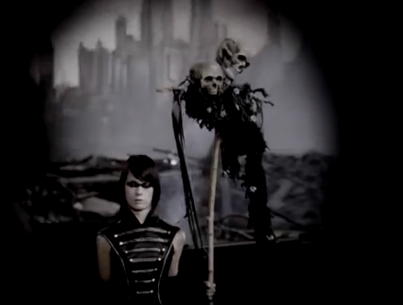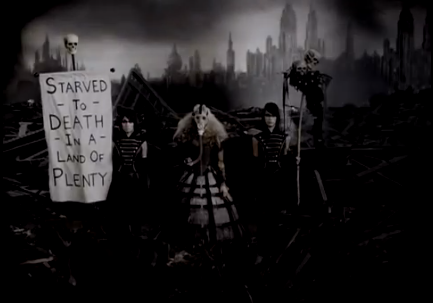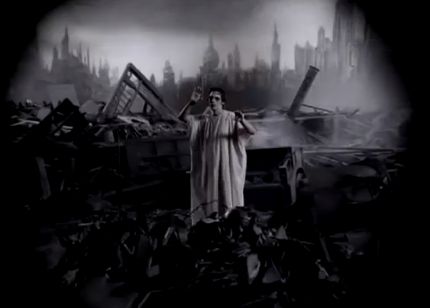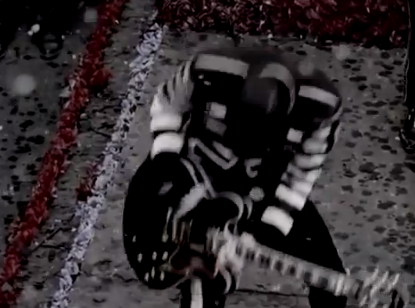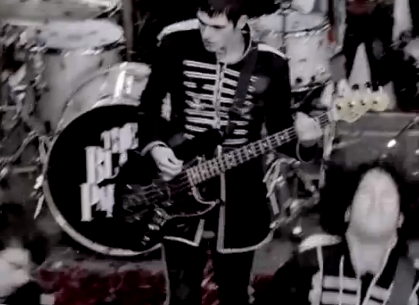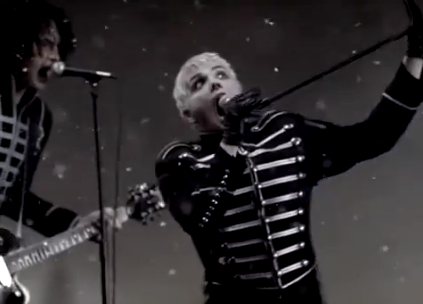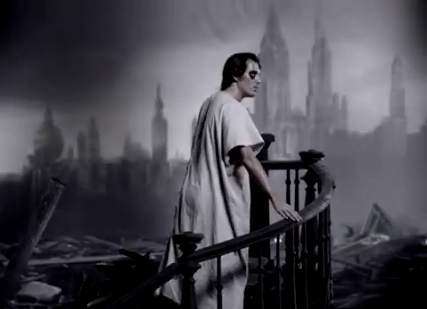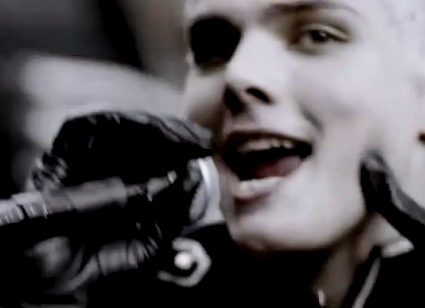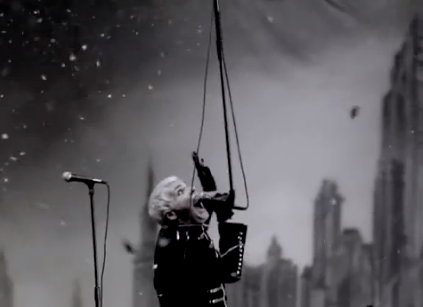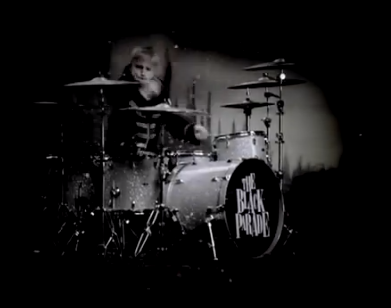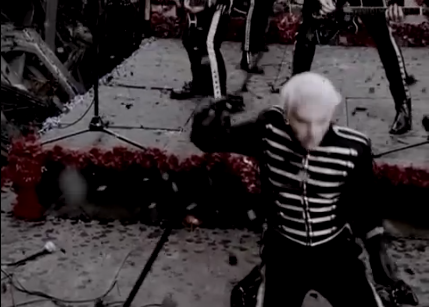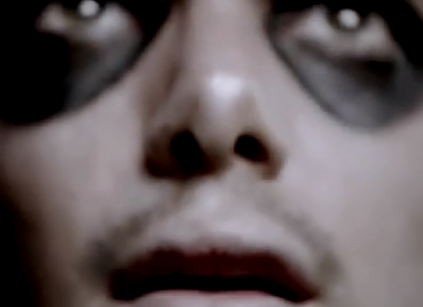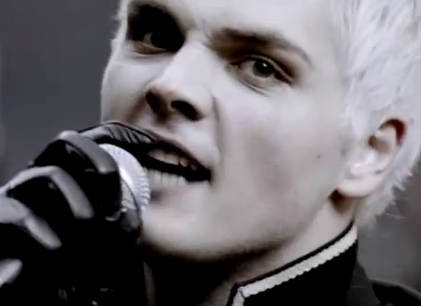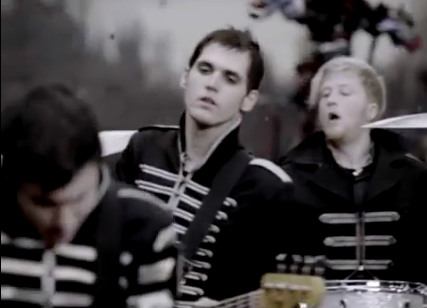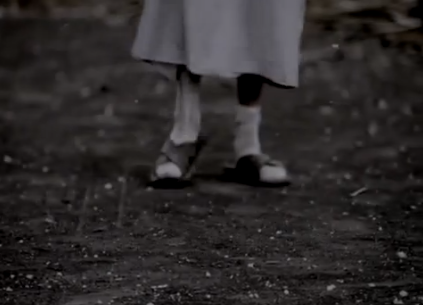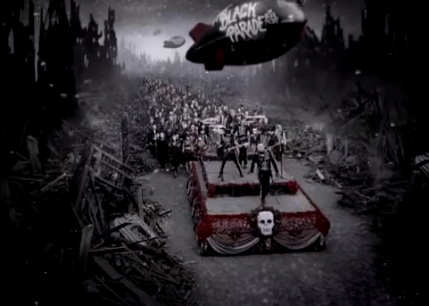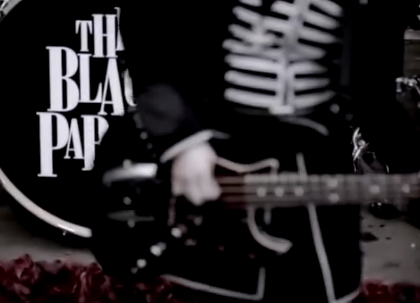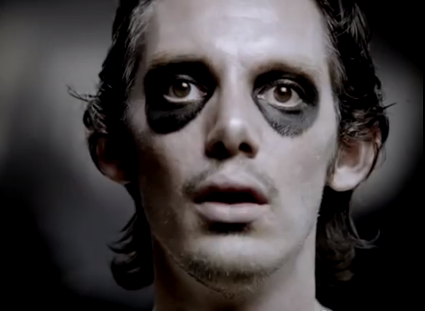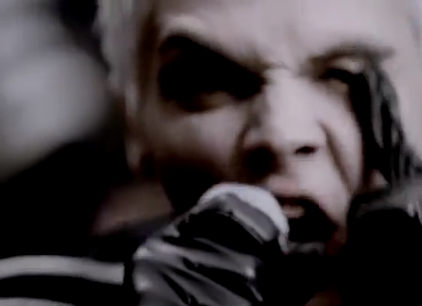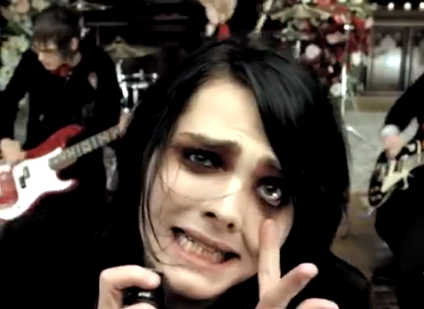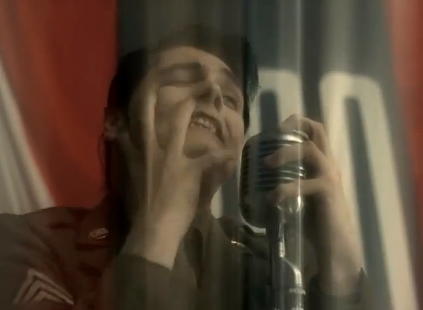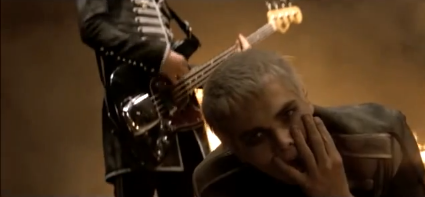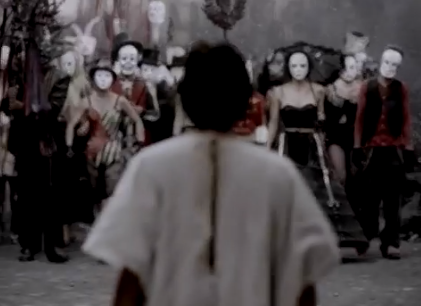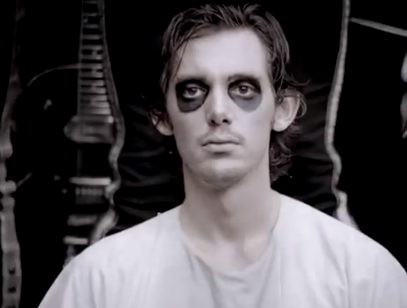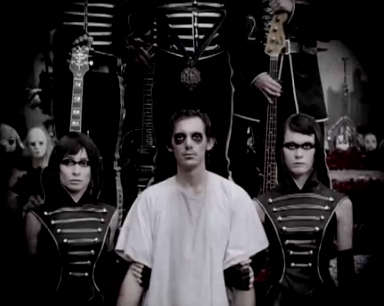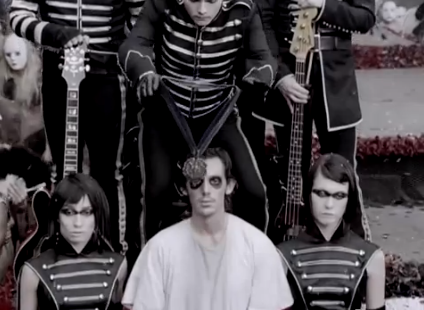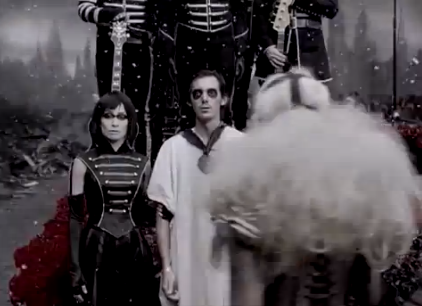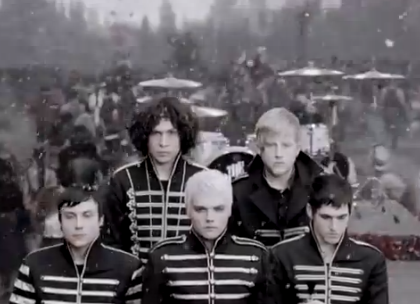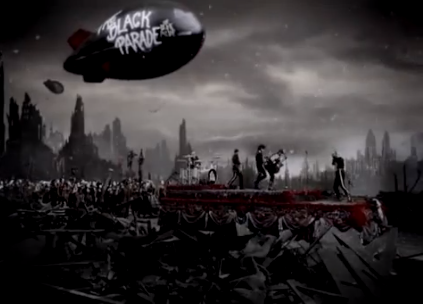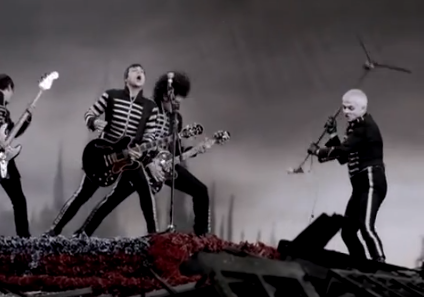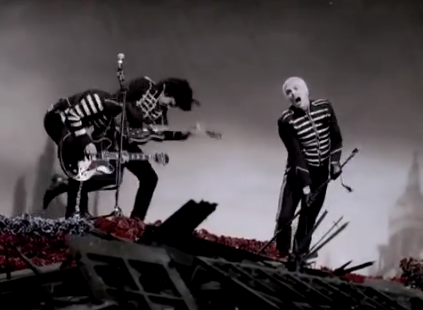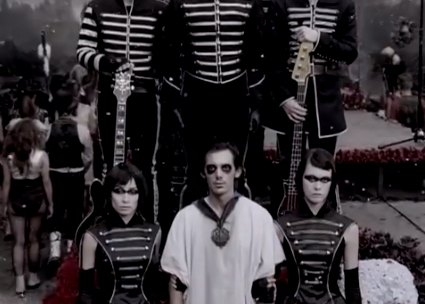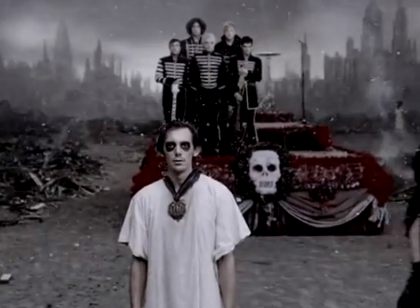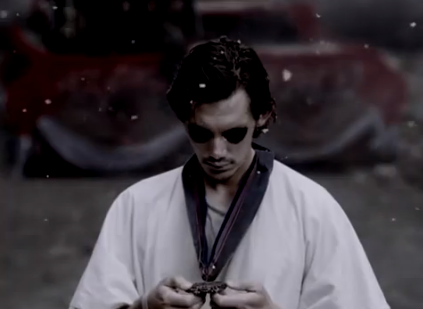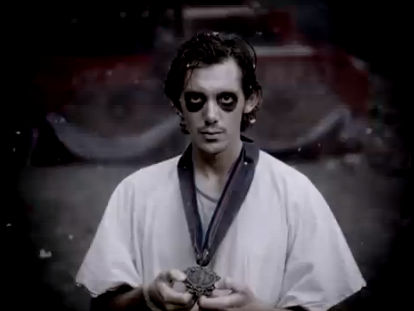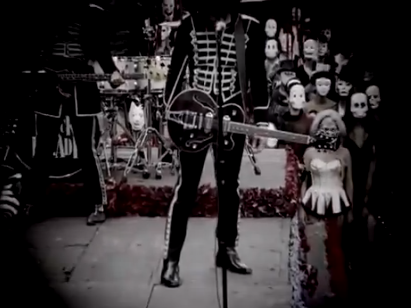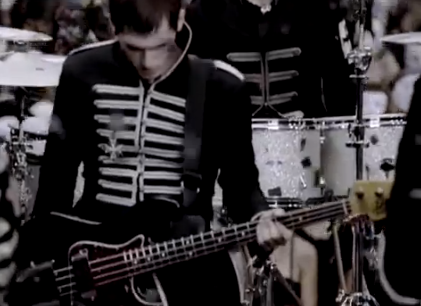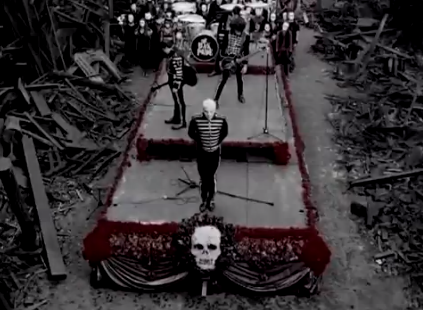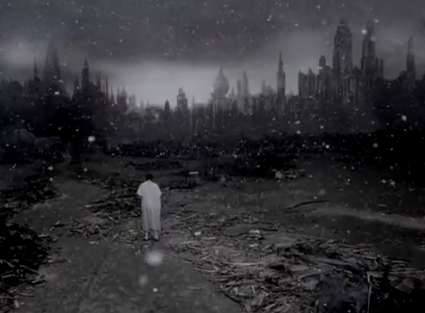This is the finished music video for the song 'Look How Far We've Come' by Imagine Dragons. Below is also the link to all of my production work for the video, including the concept ideas, treatment, proposal, storyboards, scripts, schedules, location recces, contracts, risk assessments and also the evaluation.
Friday, 13 December 2013
Friday, 6 December 2013
Video Editing Five Minute Presentation
Friday, 29 November 2013
Sophie Muller - Music Video Director Essay
Music videos in themselves are generally created to be entertaining for the audience, such as the ones mentioned later on in this essay. The film maker and the musician(s) want to keep the audience interested in the video and the song, which also makes the videos a great marketing tool to promote the musician(s) and also the film maker - such as Sophie Muller, the director that this piece of work is focusing on.
The industry makes money out of the musician(s) and their work, and therefore they want to promote the artists through the videos so that it encourages people to buy their music and would generate a profit. If people enjoy the video, and want to listen to that song and others from the same artist, they would then go and spend money on buying their songs, and the record labels would generate money through the sales. It benefits the musicians too, however, as videos - especially ones that include the artist(s) actually performing - often encourage fans to buy tickets for gigs and to see them live.
And it's not only the artist that it's promoting - the film maker, such as Sophie Muller, is able to use the videos to express their creativity, such as the way she comes up with a variety of ideas to bring the songs to life on the screen. She's also extremely creative through the way she mixes concept videos, or narrative videos together with performance aspects, but does so in a way in which they work well together and fit the music, involving and interesting the audience. Directors can also can use the videos that they create in their portfolios to attract attention from others and gain more popularity and work in the video industry, benefiting them too. Although Sophie Muller doesn't particularly have a distinctive style when it comes to her music videos, she has been in the industry for a few decades and has made her name by working with a number of top musical artists to create memorable videos, and this allows her to continue to attract work from other artists.
The industry makes money out of the musician(s) and their work, and therefore they want to promote the artists through the videos so that it encourages people to buy their music and would generate a profit. If people enjoy the video, and want to listen to that song and others from the same artist, they would then go and spend money on buying their songs, and the record labels would generate money through the sales. It benefits the musicians too, however, as videos - especially ones that include the artist(s) actually performing - often encourage fans to buy tickets for gigs and to see them live.
And it's not only the artist that it's promoting - the film maker, such as Sophie Muller, is able to use the videos to express their creativity, such as the way she comes up with a variety of ideas to bring the songs to life on the screen. She's also extremely creative through the way she mixes concept videos, or narrative videos together with performance aspects, but does so in a way in which they work well together and fit the music, involving and interesting the audience. Directors can also can use the videos that they create in their portfolios to attract attention from others and gain more popularity and work in the video industry, benefiting them too. Although Sophie Muller doesn't particularly have a distinctive style when it comes to her music videos, she has been in the industry for a few decades and has made her name by working with a number of top musical artists to create memorable videos, and this allows her to continue to attract work from other artists.
It's also a way for the audience and the musicians to feel closer to each other, however, as it is common for the artist to perform during the video and the fans of the artists can easily watch them do so from the comfort of their own home. This gives something of a connection between the artist and the fans, and makes the fans more interested in the artists. However, music videos are not just for entertainment, and can be used to portray a message, or make the audience think about certain things that the film maker and/or the artist wants them to consider - whether this is a political or a moral message, or something completely different. Artists are often considered to be more influential than politicians, and this is one of the ways they can show people their messages.
Sophie Muller is an English music video director who has
been making videos since the 80s, and is well-known with creating videos for
artists such as No Doubt, Sade, The Killers, Blur, Annie Lennox and many more artists
in long-term collaborations. Her music videos usually consist of portraying the
artist’s feelings through the video, simply by filming them performing whilst
being isolated in a dim room, however she also has worked on other videos with
a completely different style, such as the three music videos that I will be
looking at. These are:
‘Trouble’ by P!nk (2003).
‘Mr Brightside’ by The Killers (2004).
‘Grace Kelly’ by Mika (2007).
They all seem quite lively and energetic videos, which is
different from some of her other darker and more simpler videos, though both ‘Trouble’
and ‘Mr Brightside’ also have a little bit of a serious undertone to them -
with P!nk freeing the Western town from the oppressing sheriff and his group, whilst
the storyline of the girl in ‘Mr Brightside’ being about her in a love triangle
with a man and the lead singer from the band itself. They all also include
lively scenes, and all three involve a party of some sort – with ‘Grace Kelly’
being focused on a house party or an energetic photo/film shoot, ‘Mr Brightside’ being set at something similar to
a burlesque show, and ‘Trouble’ having some scenes within a bar where later in
the video quite a bit of dancing takes place. Not only are the videos lively,
but there is also a dance sequence of some form being shown in each of the videos
at one point or another, which manages to fit in well with the pace and ideas of
the videos.
These three music videos are most likely directed towards
people in their late teens and early 20s, as well as for fans of the artists.
They are fast-paced and quite dimly lit, with two having slightly more serious
backstories to them then you would first imagine, which would draw in the interest
of this particular group of people. Meanwhile, older people would probably not be able to keep up with the speed of the cuts within the videos, whilst younger children would simply be confused by what is happening within them. With the backstories, for example, during 'Mr Brightside', it seems to be about a complicated love triangle set at a burlesque show, but also seems to be reminiscent of a 2001 film called 'Moulin Rouge!' where a similar storyline takes place. Also, during 'Trouble', the backstory of the video is about P!nk freeing a small town from male oppression, with everything set in an old Western town.
All of the videos are cut quite quickly, which makes them
feel lively and energetic – grabbing the audience’s attention and making them
interested to continuing to watch the video. The videos also include some kind of
performance aspect during them, with the singer/band performing - even if it is
only for certain parts of the video and not the entire thing. Although they all
have these features of performance within them, it is clear that ‘Trouble’ and ‘Mr
Brightside’ are also quite focused on being narrative, whilst ‘Grace Kelly’
shows faint signs of all three, seeing as it is rather conceptual too, with
random scenes appearing that make little sense but are still amusing to the
audience.
There are often a lot of scenes in the music videos where
the camera quickly zooms in/out on a certain object or person, which highlights
an important part of the video – whether that is an object or a person – and
this makes the video seem snappy and upbeat. Also, barely any of the shots in
any of the three videos seem to stay still. They all move in some way, whether
it’s zooming in and out, panning, or the slight shakiness of a handheld shot. This
engages the audience and makes them feel as though they are closer to the
events of the videos, helping to attract their interest and attention of the
audience that it is aimed towards. For example, during 'Trouble', the camera zooms in quickly on the sheriff of the city, introducing him as a key character within the music video, and also the horse's injuries, showing why she is suddenly angry with the men nearby. During 'Grace Kelly', the camera occasionally zooms in and out on Mika quickly, matching the tempo of the music and making the clip seem more interesting than it originally would have done without the effect.
During ‘Mr Brightside’ and ‘Grace Kelly’, the lighting is
quite dark. In ‘Grace Kelly’ you can clearly see lights being held by people
within the video, lighting certain people up, or creating interesting dance sequences
with the handheld lights. Within this video, a lot of the people in the shots
can barely be seen because they are in the dark, or their faces are hidden by
shadows. During ‘Trouble’, the lighting seems to be quite natural, but also
rather murky for most of the scenes to give it the impression of being almost
like a ‘Wild West’ film with cowboys and Indians. ‘Mr Brightside’ also seems
quite dimly lit, with an almost smoky atmosphere inside the room that it’s
filmed in, giving it a slightly darker feel to it than the ‘Grace Kelly’ video,
which wasn’t lit quite as much although still had more of a cheerful and happy
feel to it whereas ‘Mr Brightside’ was more serious.
In ‘Trouble’, P!nk is wearing a rather revealing dress, and
so are the other women that appear later on in the video which shows the idea
of voyeurism being used. She also performs some suggestive dances, as well a
scene where she seduces the town’s sheriff in light foreplay to get herself out
of jail. Within ‘Mr Brightside’, all the women are wearing skimpy-ish dresses
and performing a dance similar to the can-can, as well as the main woman often performing
provocative dances around a couple of the characters, although ‘Grace Kelly’
shows no sign of voyeurism at all.
All these videos seem to be mostly for entertainment, as
well as marketing the song and artist which is generally why videos are created in the first place. They are all created in a upbeat way
which makes people interested in watching them, and the storylines behind them
are there for entertainment purposes rather than to portray a serious message.
They also manage to express the feelings of the songs through the videos – with
‘Grace Kelly’ being based on musical artists trying to change themselves to be
popular, ‘Trouble’ being about someone freeing a town from a controlling sheriff,
and expressing her thoughts on male oppression and rebellion whilst ‘Mr
Brightside’ is dealing with a complicated love triangle. ‘Grace Kelly’ was also
written by Mika to express his feelings when the record company wanted to
change him to be more like other artists, which he disagreed with, and although
the video doesn’t show this through a narrative, you can grasp the basic
concept of his feelings within the song through the video itself.
I personally really enjoyed watching these music videos;
they’re engaging, energetic and are amusing to watch. They also match the music
track really well, and two successfully tell a story as they have attempted to.
The editing matches the speed and tempo of the music, and the cinematography
gives them a lively feel to it which makes me want to watch them more than once
instead of changing the channel if these videos appeared on a music channel on
my television.
Thursday, 24 October 2013
Final Cut Pro - Lesson 1 Review Questions.
Final Cut Pro - Lesson 1 Review.
1.
Q: Name three ways of opening FCP.
A: The dock bar, the finder's applications and also by opening the save file.
2.
Q: What four modify keys are often used in conjunction with
keyboard shortcuts?
A: Command (cmd), option (alt), control (ctrl) and shift.
3.
Q: How do you access the shortcut menu?
A: Right click (ctrl + click).
4.
Q: In what main menu can you find the ‘import’ command?
A: File.
5.
Q: Identify three ways to open a clip in the viewer.
A: Drag and drop, double click, and click + enter.
6.
Q: Besides clicking the play button, what keys can you press
to play a clip/sequence forward?
A: Space, l, k+l.
7.
Q: Which keys move the playhead forwards/backwards one frame
at a time?
A: Left and right arrow keys.
8.
Q: How do you mark an in-point and an outpoint on a clip?
A: The I/O keys, or the two buttons on the right below the jog control.
9.
Q: What button in the canvas window do you click to edit a
clip?
A: Any of the insert, overwrite or replace edit buttons (the colourful ones at the bottom left hand corner of the canvas window).
10.
Q: Identify three ways to create a bin.
A: Right click > new bin, file > new > new bin or cmd + b.
11.
Q: What are the keyboard shortcuts to save, hide and quit
FCP?
A: cmd + s, cmd + h and cmd + q.
12.
Q: What visual indicator in the viewer lets you know that
you are at the first or the last frame of a clip?
A: The 'film reel' at the left/right of the viewer screen.
Wednesday, 23 October 2013
'Welcome To The Black Parade.'
The music video I am analysing is called 'Welcome To The Black Parade', performed by 'My Chemical Romance' and directed by Samuel Bayer. They are an alternative rock band, and this genre of music is shown often during the music video, seeing as there are a number of performance scenes, and close-ups of the band - as there are in most rock music videos. They also give a very enthusiastic and lively performance, as do other rock bands in their videos.
The music video is a mixture of all three styles of music video. They have a lot of performance scenes, whilst also having a bit of a narrative and also a conceptual feel to the video. The music video is mostly based around the lead vocalist's (Gerard Way's) belief that when somebody dies, Death comes to them in the form of their fondest memory - which in this case would be The Black Parade.
The entire video is filmed in mostly black and white, or an almost washed-out sort of colouring to it. The only colour during the video are the red roses that surround the parade's float, making it stand out from everything else and seem important during the music video - almost like the little girl in the red coat does during Schindler's List. It gives the entire video an almost 1920s, German expressionism, or perhaps old horror film. The emotions within the music video are expressed without any need for speech or sound effects, and we can easily understand the ideas behind it with just the clips and the song.
It starts with the The Patient in a hospital room, going through the progression from life to death and surrounded by nurses who are trying to comfort him in an unsuccessful way.
'When I was a young boy,
My father took me into the city,
To see a marching band...'
The 'flashbacks' seemed to be greyed out, and slightly blurry, although you are still able to tell that it's a city with possibly a parade or some kind of celebration with the balloons in view.
There are also a few shots of a television screen in front of The Patient's bed, displaying images of the lead vocalist singing, which gives us a reference to the notion of looking, as The Patient is watching him. It almost seems to be something to calm him, however, and is a good match to the calmer, piano intro to the song as it is only him singing along to the piano.
At one stage, the clip fades completely to black before reappearing again in a flash, although this time The Patient is wearing make-up, making him seem paler with dark circles around his eyes - giving a deathly and almost skeleton like impression to tie in with the rest of the clips.
A few times the clips cut back to the idea of a parade, filled with people dressed in dark and strange clothes following the float - ontop of which are the band who appear to be leading the parade. As it cuts even further out, however, we can see the environment that this parade is in - an almost dystopian wasteland of a city, with rubble surrounding the street that they're marching down, giving the video an eerie feeling.
We are then shown some closer images of the band themselves to show that they are still a main feature of the video, using both wide shots, medium shots and extreme close ups of the different members and the instruments that they play. They are all dressed in similar clothing - a black military outfit that matches the idea of a 'Black Parade'.
Some of these shots of the band are blurred, however, much like a few of the clips within the hospital to keep it tied with the theme that perhaps none of this is real, and is in fact really Death coming to welcome The Patient in what seems to be the most comforting form to him.
As The Patient continues to struggle, he reaches out for Gerard Way (the lead vocalist), who reaches back for him, almost encouraging him to join him. This once again reminds us of Gerard's belief that Death will be in a welcoming form, that will not push you away or make you feel alone.
However, from a number of My Chemical Romance's other music videos and live performances, we also see that this seems to be a bit of a star image motif, as he often appears to be reaching out for something or someone during a lot of songs.
For example, these are clips from three other music videos:
However, the image of Gerard Way reaching to The Patient through the television screen is soon interrupted, as the television itself explodes, and the image of the nurses comforting The Patient collapses, instantly putting them in the dystopian world that The Black Parade are in. The walls seem to fall down like curtains and the nurses cower, showing that they are actually in the path of The Black Parade as they approach. As this all happens, the music picks up it's tempo and the actual instruments that the band use kick in, allowing the song to progress.
The clips of the band also speed up, showing the general idea of an enthusiastic, energetic rock band during these performance scenes and giving the image of the band and what their performances on stage would actually be like. The speed of the cuts matches the tempo of the music - whereas the cuts between different shots were slower before hand, now that the rest of the band have begun to play, they have sped up.
At one point in the song, the lyrics are:
'Sometimes I get the feeling,
She's watching over me.'
At this point, the image seems to darken around the edges, and a number of the members of the band glance upwards towards the sky and the camera, almost as if we're the one watching them through something, tying in well with the lyrics.
Although the nurses cower and eventually disappear completely, The Patient stands from the hospital bed, not seeming unnerved by The Black Parade in the slightest. In fact, he almost seems comfortable around them - instead of continuing to lay on the bed, he begins to head towards the parade, as if intrigued - or familiar with the idea, once again tying in with the idea that Death comes in a welcoming form.
Throughout the entire video, however, there are a number of clips in which the edges fade in and out, showing us that this is not life, but in fact what would be beyond it for this one particular person - The Patient.
There are a few close ups, and extreme close ups of The Patient, clearly showing the make-up used to make him look deathly and pale as he looks around at this new world that he is in.
At one stage, The Patient seems to catch a glimpse of a woman standing not too far away, dressed in a Victorian-era gown and facing away from him. He watches for a moment before glancing back to the parade, almost as if seeking permission to approach the woman. This is almost like the video is giving the idea of looking, but not sexualising it in anyway as the woman is protected from any prying eyes.
As The Patient finally turns to approach the woman, we get a few close-ups of her as she turns, seeing that her dress continues to match the outfits of the band on The Black Parade with the dark, military-style corset. As the scene continues to progress, we notice that she is wearing something on her face, but are unable to properly see what it is, once again giving us the idea that she is being protected from being seen in any sort of degrading way.
As she continues to turn, the clip cuts back to a shot of the band's drummer who seems to be watching the scene intently as he plays the drums, almost as if wanting to know what will happen, and who this woman really is.
When The Patient finally gets a full glimpse as the woman as he circles her, who is supposed to be 'Mother War', we can see that she is wearing a gas mask on her face, tying in with the whole dystopian and post-apocalyptic landscape that they are all in.
Every now and then, the video switches back to an establishing shot of The Black Parade, reminding us of where they are, and what's around them all at the time of the scenes that are taking place, as well as including the band more often in the video - albeit at a distance.
It doesn't take long before The Patient continues walking, leaving Mother War behind, once again clearly showing us that she is not being sexualised in this video in any way or form, and The Patient has enough respect to carry on his way and not push the matter with her any further.
During one of the performance scenes in the music video, Gerard Way drops to his knees on the float and continues to sing, which also seems to be something that he does a lot during other music videos, as shown below:
About mid-way through the video, the clips cut to a couple of shots of the entire band together - although not playing. They are still in their black, military uniforms, but are sitting, as though posing for a normal photo shoot for the band.
It then almost instantly cuts back to footage of the band playing, although once again fading in the borders of the video and blurring the clips slightly, as if showing that although Death may appear in a welcoming form, it is still the end of a life, and is never perfect.
There are then some rather conceptual clips within the video, such as The Patient looking around, and seeing Mother War with two others - Fear and Regret - one of which is holding up a sign that says:
'Starved to death in a land of plenty.'
There is no real reason for this to be in the video, it seems, as there is no indication that The Patient died from any other means but natural, although this makes us think differently. It may be giving an intertextual reference to the fact that man is destroying the world, however, and that some decent people are being denied the rights to living like the rest, even though the rest of the human race has the means to support them, and allow them to keep living how they want to.
However, it may also be Regret that is holding up the sign, showing that it is possibly something he regrets from his life, and wishes he could change although now it is too late to do such a thing, and he understands what impact his decisions made on people.
We also see a shot of The Patient almost miming being trapped in a box, or a cage, and this may show us that he was denied his rights like the sign had said, and his death was the consequence of neglect from the rest of the world, when he could have been saved from this fate.
Once again, we get a conceptual scene as The Patient walks up a ruined staircase, although is unable to go anywhere through it. This gives us the thought of perhaps he expected Heaven or Hell after death - not something welcoming such as the Black Parade, or a fond memory of his childhood. It makes us wonder if things are not always as we expect them to be, and instead may be entirely different - although sometimes for the positive, and sometimes for the negative.
As the video shows more shots of the band, we get a mix of close ups and wide shots of each member of the band, although we get more clips of Gerard than any of the other members because he is singing, and this is something we expect to see in any rock-genre music video, and not just in this one.
We soon get an extreme close up of The Patient, but it then cuts to Gerard and other clips of the band/The Patient, the tempo of the song slowing down slightly and the lyrics being:
'Do or die, you'll never make me,
Because the world will never take my heart,
Go and try, you'll never break me...'
This could almost be referring to earlier on in the video, where it almost gave the impression of the world ruining people's lives by not caring for single people, who are perhaps less fortunate that richer people with a higher status. It is almost encouraging, to say that you should never give in no matter what state the world is in, and that you should always believe in your heart no matter where it takes you.
Meanwhile, this is represented in the video because, although The Patient is in a strange, unknown dystopian landscape, and in front of The Black Parade which is heading down the street, he stays strong, and doesn't try to run, nor hide. He is still wearing his patient gown from the hospital, and wearing nothing but slippers and not something like boots on his feet as he is walking through the barren world, clearly not giving in simply because he is faced with problems.
At this stage in the music video, the clips are focused a lot on the band playing, and The Patient beginning to approach the parade itself instead of exploring the destroyed landscape around them.
'We want it all, we wanna play this part,
I won't explain, or say I'm sorry...'
The majority of the people that are following behind The Black Parade are dressed in strange outfits that you would never see people wearing on an everyday basis, but the lyrics seem to show that that doesn't matter, and it's what they want to be seen as during the parade and so that's what they are wearing. They don't have to apologise for it or explain their motifs because that's simply what they want to wear, and people shouldn't have a problem with it.
'I'm unashamed, I'm gonna show my scar...'
At this point in the music video, Gerard drags a finger down his face, as he has done before in a number of different music videos. This is yet another clear star-image motif, and is something that he is known for doing quite often at different points.
Give a cheer for all the broken,
Listen here, because it's who we are...'
At this stage in the music video, the lyrics are incredibly inspiring, and almost saying that it's okay to be different, or messed up in some way or form as that's who you are and no one should be able to change that. The video once again shows The Patient approaching some of the followers behind the parade, who once again are wearing odd outfits which range from things that almost look like clowns, to normal-looking people who are simply wearing masks to hide their face, as if they are all one at that point in time.
'I'm just a man, I'm not a hero,
Just a boy, who had to sing this song,
I'm just a man, I'm not a hero...'
As these lyrics are being sung, The Patient is standing in front of the band and the float and besides Fear and Regret, as Gerard puts a medal around his neck, tying into the whole idea that he isn't a hero - he's just leading the song and the parade, but The Patient is for being brave and facing the prospect of death with help from them.
At one stage, Mother War, from earlier reappears for a few moments, passing The Patient before disappearing once again, making her seem mysterious and almost as if she may have just congratulated The Patient in some way or form.
As the tempo of the song picks up once again, the band begin performing - but this time a lot more energetic and lively than they had been doing during the rest of the video. It's here we begin to see some of the things we expect from a rock band - a little bit of violence as Gerard smashes his microphone stand, and Frank spinning his guitar around quite dangerously as he is playing.
However, this is quite normal for the band, as their songs are lively enough to be able to feel connected to in this sort of way, and they feel as though they should put energy into their performances instead of standing around on stage dully. This gives the audience yet another impression of what the band would be like to see live.
As the song draws to a close, the parade seems to retreat slightly away from The Patient - it getting slightly further away from him with each shot whilst continuing with the lyrics:
'(We'll carry on...)
Do or die, you'll never make me,
(We'll carry on...)
Because the world will never take my heart...'
It's almost as if although the parade is now leaving The Patient to fend for himself in the dystopian world. As Fear and Regret kiss him goodbye, he no longer feels afraid to face Death by himself, and he is able to carry on his way and leave the living world behind him.
The Patient glances down at the medal he has been given for a moment before glancing back towards the leaving parade, though doesn't follow after them, once again giving us the impression that he has overcome his fear with their help, and has been encouraged enough to carry on.
As the song fades away into a drum rhythm that sounds almost like something you would hear in an actual parade, the band stop playing, and we get a few different shots of each of them standing still before cutting to a wide shot of the entire float, almost as if they have accomplished their task.
The clips once again begin to fade in and out like they were doing so at the beginning of the music video, but now it no longer feels as though it's because of a struggle, and feels somewhat welcoming.
The final shot we get during the music video is of The Patient, alone and wandering into the barren world without any signs of fear, as if he now knows what to do and what to expect, once again giving us Gerard Way's belief that Death will come in a welcoming way to each individual person, and after they are understanding of what is happening, they can carry on.
Overall, we can see that although this is a dark music video which ties in with the topic of death and dying quite a lot, it is also inspiring in certain ways, especially with the lyrics. It uses washed out colours, make-up, outfits and a dystopian landscape to give us this impression. The use of effects in the video such as fades and flashes only adds to the themes shown in the video, although it is difficult to place it in only one of the three music video categories, and so I feel as though it partially belongs in all three in different ways. The video shows a slight narrative, as well as performance scenes and also clips that make people think, and come up with their own ideas for what it means. Frequently the lyrics tie into the concept of death, and the music also matches the speed and cuts of the clips within the video, not to mention us seeing some examples of the stereotypical rock band performances.
Subscribe to:
Posts (Atom)
